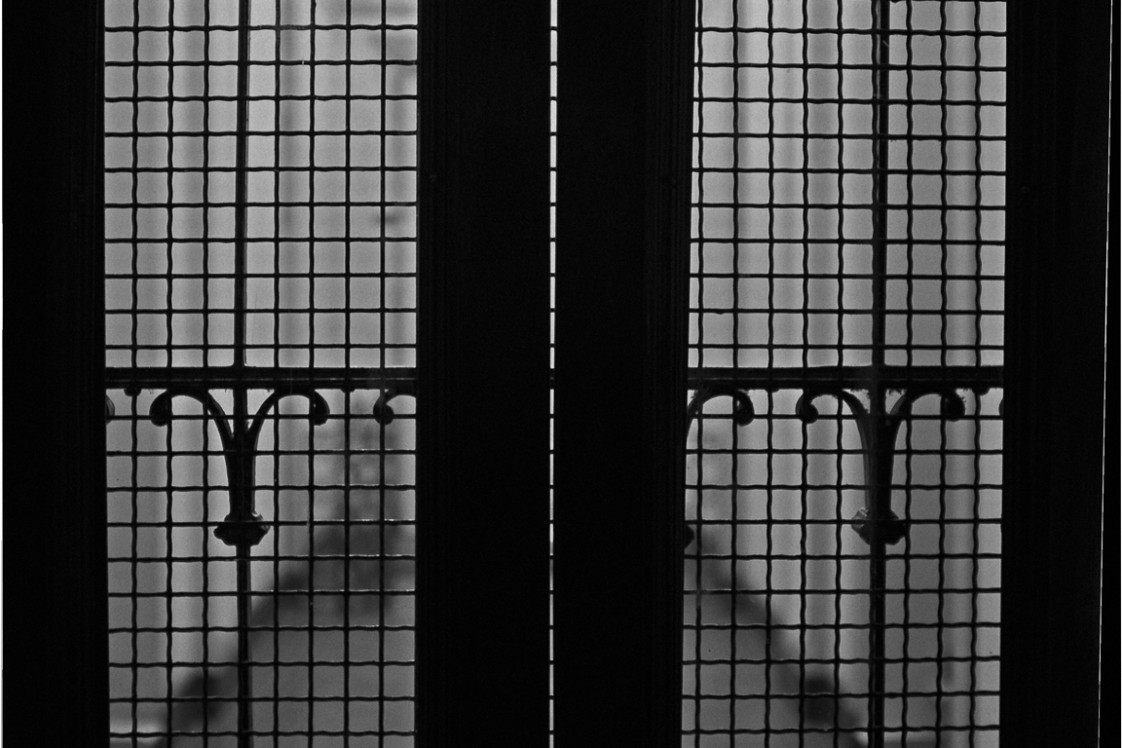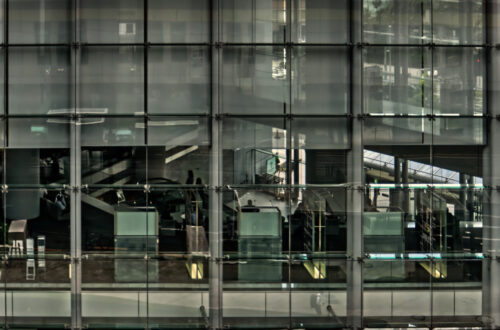Behind The Shaft

Taken from inside one of those old Roman elevators—small, slow, caged in iron. The kind you find tucked into the corner of a 19th-century palazzo, where the wood creaks and everything smells faintly of dust and time.
This photo looks outward, through the gate. But in a way, it also looks inward. The gridded metal frame keeps your focus close. The world beyond is blurred just enough to feel distant. Stairs curve down somewhere out of view. The light is natural, soft, diffused. The rest is silence.
There’s no action here. No drama. Just the texture of the old ironwork, hand-forged patterns now worn smooth by a hundred years of opening and closing, guiding and pausing, moving and stopping. The symmetry isn’t perfect. But that’s what makes it feel real.
Elevators like this don’t rush. They don’t ping. You close the gate by hand. You hear the mechanism catch. And then you wait—lifted slowly between stories of plastered walls and tall doors, through the kind of architecture that was never meant to be fast.
Looking through the frame felt a little like looking through time. The design is ornate but functional. Romantic, but tired. It’s not nostalgia—it’s just still there. Still doing what it was built to do, in a city that stacks centuries like bricks.
I took this shot in the middle of that quiet ride. Between floors. Between moments. The gate held the light just long enough.




